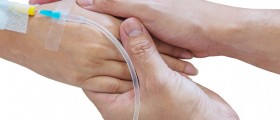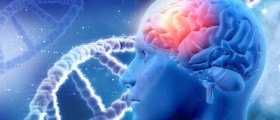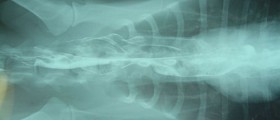
What is progressive muscle atrophy
The experts have come up with five types of this disorder. These are progressive bulbar palsy, pseudobulbar palsy, progressive spinal muscular atrophy, primary lateral sclerosis and amyotrophic lateral sclerosis. Every person can end up suffering from progressive muscle atrophy but the disease is mainly seen in those aged between 30 and 60 years of age. However, the disease is seen more in men than women. Most patients have over 50 years of age. Autosomal dominant gene is the cause of the disorder in more than 5% of all patients. The doctors claim that more than one member of the family can inherit the disorder. According to the data in the United States, up to 7 people out of 100,000 inherit the disorder. The incidence is somewhat higher in certain parts of Europe while it is really low in Africa.A person has the most chance of inheriting the disease if both of the parents are diagnosed with the progressive muscle atrophy. Another cause that is seen most often is spinal muscular atrophy. Spinal muscle atrophy is not just one disease but a lot of them grouped together. The most dangerous form of spinal muscle atrophy is type I, which is also known as Werding-Hoffman disease.
Weak muscles are the most obvious sign of progressive muscle atrophy and the sign that is seen most often. Children born with spinal muscular atrophy type I will have weak muscles, little muscle tone and breathing problems visible right after birth. If the child is born with type II of the disorder, these symptoms do not occur until the child has reached 2 years of age. In addition to weak muscles, some of the other symptoms that are seen in an infant include feeding problems, breathing problems, insufficient head control, little spontaneous movement and weakness that only gets more severe as the child grows older. Nasal speech, often seen respiratory infections and a posture that becomes worse as the child ages are the symptoms seen in a child.Can physical therapy help?
The doctors do not have an easy task of diagnosing this disorder. The diagnosis of progressive muscle atrophy is based on exclusion of other possible conditions. Multifocal motor neuropathy and spinal muscular atrophy are some of the first conditions that are being ruled out. Apart from asking the patient about the symptoms and family history, the doctor will also order several tests. MRI, clinical examination and EMG are the tests that are ordered most often. MEG tests are especially vital as they show if there is death of neurone in some of the parts of the body that are affected by the disease. The process of diagnosis in case of progressive muscle atrophy lasts for 20 months in some situations.
After the diagnosis is made the doctor will discus treatment options with the patient. The actual treatment that is effective in stopping the deterioration of the nerve is still unknown. Due to this fact the treatment options focus on relieving the inconvenience that some symptoms provide and contribute the support that is essential. In case the drooling is a problem the doctor can prescribe the patient with certain medications. Muscle pain and spasticity can also be treated with the use of medications.Physical therapy and occupational therapy play a significant role as they aid in keeping the mobility of the joints, do not allow shortening of the muscle tissue to occur and keep the muscles that are still working strong enough. A lot of patients benefit a lot from braces and walkers as they aid the stability of the patient and make him or her a lot more mobile. Other aids like wheelchairs for instance are used in order to provide the independence of the patient for as long as that is possible. The prognosis for this disorder is almost never good as the patient does not live form more than a several years after he or she is diagnosed with it.
















Your thoughts on this
Loading...